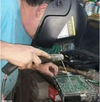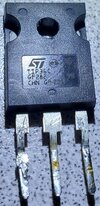You are using an out of date browser. It may not display this or other websites correctly.
You should upgrade or use an alternative browser.
You should upgrade or use an alternative browser.
-
You can now help support WorldwideDX when you shop on Amazon at no additional cost to you! Simply follow this Shop on Amazon link first and a portion of any purchase is sent to WorldwideDX to help with site costs.
-
A Winner has been selected for the 2025 Radioddity Cyber Monday giveaway! Click Here to see who won!
Anytone at-5555n II (version 2)
- Thread starter Eldorado828
- Start date
I started poking around the innards of mine at lunchtime today. Here's what I have for voltages so far. All numbers are with radio at full RF power and into a dummy load using the stock mic set to EL level 36. The power supply is a MegaWatt S-400-12 set to 13.8 volts. Nothing else is running off this power supply. I don't see any obvious physical signs of damage to the board.
Pictures of measurement locations are at the bottom.
Power cord plug end:
Power cord connection inside case:
TIP36C Bipolar Transistor
L7808CV voltage regulator
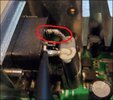
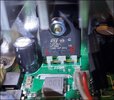
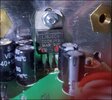
Pictures of measurement locations are at the bottom.
Power cord plug end:
13.845 volts
Power cord connection inside case:
13.826 volts not keyed
13.401 volts on SSB with modulation
13.585 volts on AM with modulation
TIP36C Bipolar Transistor
Left pin
13.375 volts not keyed
12.855 volts on AM with modulation
12.626 volts on SSB with modulation
Right pin
13.823 volts not keyed
13.553 volts on AM with modulation
13.344 volts on SSB with modulation
L7808CV voltage regulator
Left pin
13.681 volts not keyed
13.140 volts on SSB with modulation
13.341 volts on AM with modulation
Right pin
8.052 volts not keyed
No change when mic keyed and modulation



Two things jump out at me in my observations. Q552, looks like it is cracked and the power in soldering looks like shit.I started poking around the innards of mine at lunchtime today. Here's what I have for voltages so far. All numbers are with radio at full RF power and into a dummy load using the stock mic set to EL level 36. The power supply is a MegaWatt S-400-12 set to 13.8 volts. Nothing else is running off this power supply. I don't see any obvious physical signs of damage to the board.
Pictures of measurement locations are at the bottom.
Power cord plug end:
13.845 volts
Power cord connection inside case:
13.826 volts not keyed13.401 volts on SSB with modulation13.585 volts on AM with modulation
TIP36C Bipolar Transistor
Left pin13.375 volts not keyed12.855 volts on AM with modulation12.626 volts on SSB with modulationRight pin13.823 volts not keyed13.553 volts on AM with modulation13.344 volts on SSB with modulation
L7808CV voltage regulator
Left pin13.681 volts not keyed13.140 volts on SSB with modulation13.341 volts on AM with modulationRight pin8.052 volts not keyedNo change when mic keyed and modulation
View attachment 69542
View attachment 69543
View attachment 69544
I noticed that too. If it is indeed cracked, it needs to be replaced, and may well be the cause of the problem..........Q552, looks like it is cracked
I've seen those fail with a loud bang more than once before....from too much input voltage.
OP are you using a good meter to read that 13.8VDC ? Some meters read falsely when in the presense of RF.
I noticed that too. If it is indeed cracked, it needs to be replaced, and may well be the cause of the problem..........
I've seen those fail with a loud bang more than once before....from too much input voltage.
OP are you using a good meter to read that 13.8VDC ? Some meters read falsely when in the presense of RF.
I did measure it with two DVMs. One reads to 3 decimal places and the other to two. They gave the same rounded readings.
I happen to have a new TIP36CW still in the original packaging from Mouser that I will put in tonight to see what happens. I also have a new L7808CV too but the specs say it should be 13.8 in and 8 volts out and that's what the one in the radio does now. I also have a handful of new Vishay IRF520s from digikey.com still in the original packaging. I bought some spares when I was messing around with a few radios last year. The parts were cheap but the shipping was not, so why not grab some extras at the same time? Of course this is the reason that I have brake parts from motorcycle and car models I will never own again, but you never know when they might come in handy.
To the soldering station... i.e. my office desk.
While you are at it, reflow that power input pin.I did measure it with two DVMs. One reads to 3 decimal places and the other to two. They gave the same rounded readings.
I happen to have a new TIP36CW still in the original packaging from Mouser that I will put in tonight to see what happens. I also have a new L7808CV too but the specs say it should be 13.8 in and 8 volts out and that's what the one in the radio does now. I also have a handful of new Vishay IRF520s from digikey.com still in the original packaging. I bought some spares when I was messing around with a few radios last year. The parts were cheap but the shipping was not, so why not grab some extras at the same time? Of course this is the reason that I have brake parts from motorcycle and car models I will never own again, but you never know when they might come in handy.
To the soldering station... i.e. my office desk.
SL
All these little things your folks recommended to me in the spring of 2023 like the good small soldering iron and solder sucker make this stuff a lot less difficult to do. Not easy, but less difficult. Now if only it will somehow magically get this radio working again. I hope so because I like it and it was working great up right until this issue. But with the cost of the 6666Pro and QT60 Pro, it doesn't make sense for me to spend $200 trying to get this working.
You are correct on the economics, but I hope you are successful with the fix.All these little things your folks recommended to me in the spring of 2023 like the good small soldering iron and solder sucker make this stuff a lot less difficult to do. Not easy, but less difficult. Now if only it will somehow magically get this radio working again. I hope so because I like it and it was working great up right until this issue. But with the cost of the 6666Pro and QT60 Pro, it doesn't make sense for me to spend $200 trying to get this working.
Did you forget the Sledge Hammer , Shot Gum, or 250 Ton Press?Thanks for the leads. Hopefully the fuse and fuse holder can be eliminated from the list of suspects since it's now been tried with at least 3 power cords and 3 power supplies at two different locations.
I have lineman gloves, a newer multimeter, a clamp meter, a second power supply I used when checking the bias, plus 3 or 4 older multimeters that are left over for nastier chores in older engine bays. Also a few good soldering irons, solder sucker, etc. And 10x and 30x lighted magnifying glasses for my geezer eyes (excellent investment at only $13 each!). Out in my workshop I also have a MIG welder, an air compressor and air chisel depending on how this goes.
View attachment 69509
View attachment 69508
View attachment 69507
Last night I replaced the TIP36C bipolar transistor and reflowed the connection to the power plug with no improvement in the modulation or dimming of the display during SSB modulation.
I went rummaging through my radio parts stash and I do have a new L7808CV voltage regulator (U750), a new C2314 (Q109 pre-driver?) as well as six new IRF520 and four 13N10 MOSFETs (Q102, Q102, Q103, Q104). Is there any point in me replacing any of these (and checking/setting the bias) as a Hail-Mary type of play? I don't mind removing, testing and replacing these because the parts are inexpensive and I already have them. But if it's unlikely to help, I won't bother.
Beyond that, it's beyond my skillset and knowledge to even know what to do next. Then the decision would have to be to decide between the 6666 Pro, the QT60 Pro or Anytone Q5N2 short chassis. I like the larger display better on the latter two units but maybe it's because I'm used to my current Q5N2. The 6666 Pro looks like a great unit too!
You can also tell in the picture below that one of my daughter's cats has been closely supervising me whilst I poke around in the radio. He's very curious, and nosy.
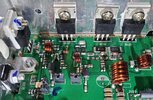
I went rummaging through my radio parts stash and I do have a new L7808CV voltage regulator (U750), a new C2314 (Q109 pre-driver?) as well as six new IRF520 and four 13N10 MOSFETs (Q102, Q102, Q103, Q104). Is there any point in me replacing any of these (and checking/setting the bias) as a Hail-Mary type of play? I don't mind removing, testing and replacing these because the parts are inexpensive and I already have them. But if it's unlikely to help, I won't bother.
Beyond that, it's beyond my skillset and knowledge to even know what to do next. Then the decision would have to be to decide between the 6666 Pro, the QT60 Pro or Anytone Q5N2 short chassis. I like the larger display better on the latter two units but maybe it's because I'm used to my current Q5N2. The 6666 Pro looks like a great unit too!
You can also tell in the picture below that one of my daughter's cats has been closely supervising me whilst I poke around in the radio. He's very curious, and nosy.

Before you decide to change anything .......
Have you tried to tighten the screws that hold the circuit board to the aluminum
frame? There's one in your last picture between Q103 and Q109, just a thought.
They should be very tight .........
73
Have you tried to tighten the screws that hold the circuit board to the aluminum
frame? There's one in your last picture between Q103 and Q109, just a thought.
They should be very tight .........
73
I haven't but I certainly will. Thanks for the idea.Before you decide to change anything .......
Have you tried to tighten the screws that hold the circuit board to the aluminum
frame? There's one in your last picture between Q103 and Q109, just a thought.
They should be very tight .........
73
I checked them and they are quite tight.
dxChat
- No one is chatting at the moment.
-
dxBot:brandon7861 has left the room.
-
-
-
-
@ boniface95:Hi there, I just posted this question, if anyone has time to check it out, i'd really appreciate some feedback. https://www.worldwidedx.com/threads...-radio-transmitters-in-the-same-space.270736/

